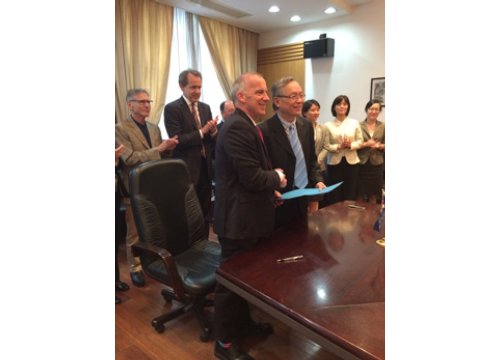
Asian Scientist (Jan. 21, 2014) – An international research team have observed an on-chip soliton compression in a silicon photonic crystal for the first time.
The study, published in Nature Communications, may shape the design of future integrated optical communications systems.
“Optical soliton waves in a silicon photonic crystal chip the size of a human hair could add key insights to future integrated optical communications systems,” said Dr Chad Husko from the University of Sydney who led the research together with Andrea Blanco-Redondo.
Solitons, or solitary waves, are nonlinear waves that propagate through a medium undistorted, maintaining their shapes while traveling at constant speed. The soliton phenomenon was first described by John Scott Russell (1808–1882) who observed a solitary wave in a canal in Scotland.
In the ideal case, the soliton behavior in silicon would be similar to that in a glass media, such as optical fibers. However, the composition of the silicon waveguide can distort this phenomena and had, until now, prevented soliton behavior from being observed in silicon photonic crystals.
Because soliton propagation occurs at the micron scale, the size scale of human hair, the researchers are hopeful that their findings would one day lead to the miniaturization of optical components featuring soliton-based functionality in integrated silicon photonic chips.
“Our experiments will inform the ongoing push to develop optical circuits in CMOS-compatible materials such as silicon for on-chip communication, similar to the community’s research in glass fiber in the 1980s,” said Dr Husko.
The understanding of solitons in optical fibers played a key role in the development of long-haul optical telecommunications and continues to inform how terabits of data are sent down them.
The article can be found at: Blanco-Redondo A et al. (2014) Observation Of Soliton Compression In Silicon Photonic Crystals.
——
Source: University of Sydney; Photo: OpenPlaques/Flickr/CC.
Disclaimer: This article does not necessarily reflect the views of AsianScientist or its staff.












